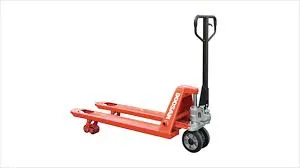


Understanding Crane Weight Scales Importance and Functionality
In the world of construction, logistics, and heavy lifting, accurate measurements are crucial for safety and efficiency. One essential tool in these industries is the crane weight scale, a device designed to determine the load weight lifted by a crane. This article delves into the significance of crane weight scales, their functionalities, and the implications of their usage in various sectors.
The Importance of Accurate Weight Measurement
Crane operations involve lifting heavy equipment and materials, from steel beams in construction to containers in shipping. Accurately knowing the weight of these loads is critical for several reasons
1. Safety Overloading a crane can lead to catastrophic failures, including crane collapse, which poses dangers not only to the operators but also to workers in the vicinity. By utilizing a crane weight scale, operators can verify that they are not exceeding the crane’s load capacity, thereby preventing accidents.
2. Efficiency Accuracy in weight measurement can significantly enhance operational efficiency. Knowing the precise weight allows for better planning and execution of lifting tasks, minimizing downtime caused by incorrect load assessments.
3. Regulatory Compliance Many industries are governed by strict regulations regarding load limits and safety standards. Using a weight scale ensures compliance with these regulations, helping companies avoid legal issues and potential fines.
Types of Crane Weight Scales
There are several types of crane weight scales available in the market, each designed to meet specific operational needs
1. Load Cells These are transducers that convert a force (weight) into an electrical signal. Load cells are commonly used in mobile cranes and can be integrated into the crane's rigging. They provide real-time weight readings, enabling operators to make informed decisions during lifting operations.

2. Dynamometers These devices measure force or weight through tension. A dynamometer can be attached between the load and the crane, providing accurate weight information. They are often used in situations where precise weight measurement is paramount, such as in specialized lifting tasks.
3. Weight Indicators These are standalone devices that can display the weight measured by load cells or dynamometers. They may include features such as data logging, load monitoring, and alarm systems to warn operators of overload situations.
4. Wireless Scales With advancements in technology, wireless crane weight scales have become increasingly popular. These systems operate using Bluetooth or Wi-Fi, allowing operators to monitor load weights remotely, which can be particularly useful in large construction sites or warehouses.
Benefits of Using Crane Weight Scales
Investing in a crane weight scale brings numerous benefits to businesses involved in heavy lifting
- Cost Savings By preventing accidents and reducing damage to equipment, crane weight scales can save companies significant amounts of money in repair costs, insurance premiums, and potential legal fees.
- Improved Productivity With accurate weight measurements, teams can work more effectively, minimizing delays caused by miscalculations and ensuring that projects stay on schedule.
- Enhanced Communication Integration of crane weight scales into a company's operational system improves communication among team members. When everyone has access to accurate load data, it fosters better coordination and reduces the chances of miscommunication during lifts.
Conclusion
In conclusion, crane weight scales are vital in the construction and logistics sectors, providing essential support for safe and efficient operations. Their ability to accurately measure the weight of loads not only enhances safety but also boosts productivity and ensures compliance with industry regulations. As technology continues to evolve, the design and functionality of crane weight scales will likely advance, offering even greater accuracy and efficiency in the future. For anyone involved in heavy lifting, investing in quality crane weight scales is not just a necessity; it is a commitment to safety and operational excellence.



